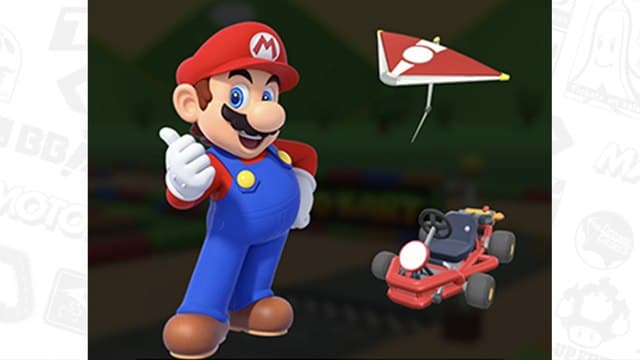Video game mascots jump like fish breathe water. Or… something like that, anyway. Embedded above you is the first episode of Tinker. And it’s a doozy! Tinker is an examination of game mechanics: macro, micro, and all the sizes in between. I plan to both delve deep on what makes games tick and sample the surface of ideas. Along the way we’ll develop a cross-disciplinary understanding of design — like comparative literature but, ya know, with games instead of books!
This pilot started out by exalting the double jump for all to see. Putting it on a pedestal required a solid foundation, and soon enough this little video became a short survey of the video game jump in general. So, learn about the first video game jump, watch a clip of Soylent Green (did you spot it?), and follow the path to rocket jumps and beyond. All the while you can enjoy the playful perversions we see in the modern day gamescape. There’s also a lot of Mario… To be fair, though, jumps are sort of his jam.
As for the double jump? Well, there might be a bit more history to unlock there! Tinker had some headway, but we’ll need to track down some devs in Japan one day to find out. Watch the episode to learn what I’m talking about.
And while the video covers quite a few decades (and fair swathe of games) some things landed on the cutting room floor — or some interesting trivia tidbits just didn’t fit. Read below for a look at some of the little details not covered in the video above.


I had to put a blip of Fast Eddie in the video. Fast Eddie, along with Bobby is Going Home, sit among that rarefied group of Atari 2600 game that beg the question: wha? Eddie is like Space Panic plus Donkey Kong divided by two: all ladders and controlled jumps. There isn’t too much to it, really, but it does feature a pause button. That was a true rarity in 1982. Fast Eddie was also designed by Mark Turmell, a bona fide kid genius who made a mint as a teenager making games, and went on to make some favorites like NBA Jam and Smash T.V.

Spelunker is held as a prime example of what the Japanese call a kusoge, or a “shit game.” This is actually an affectionate term… Like when when Prez. Bush called Karl Rove a Turd Blossom. Spelunker was actually my first Nintendo game, so it holds a special place in my ventricles. One of the most confounding things about it, however, is that if you jump or fall a teeny, itsy, tiny bit your little dude will blink a few times before losing a life. Mario in Donkey Kong had a similar ailment. It’s something we now refer to as “fall damage” in modern games. Spelunky didn’t inherit this trail, but Spelunker HD sure did!

There’s a whole history of glitches becoming game mechanics. Most famously, combos in Street Fighter are now par for the course. Now just look at the wall jumps in the original Super Mario Bros. While it wasn’t needed to complete the Lost Levels/Super Mario Bros. 2 in Japan, it sure helped! And perhaps it inspired the mechanic becoming a legit move in Mario 64?

The isometric view was a way to get wows. (Actually, it’s usually dimetric, but let’s not split hairs.) Congo Bongo gets used as a dash of B-roll in the episode, with the faux 3D look being pleasing to the eyeballs. A lot of the trials and tribulations of true 3D jumping took root here, with some of the same solutions. Beware any isometric game where you can’t jump without a shadow!

VVVVVV is rad. That’s not really insightful, but the gravity switching is such a grand idea. So I just want to say check out Metal Storm on the NES — and of course the Gravity Rush series on PlayStation devices. You have a Vita, right? Well, if not, both games are on PlayStation 4 now as well. And if you like anime make sure to check out Patema Inverted!

I gave I, Robot top billing for its 3D jumps: mainly because of my love for Isaac Asimov, The Alan Parsons Project, and that jumping being against the the law was too good not to use. However, 1990’s Alpha Waves is likely the first real 3D platformer. Its polygons are… polygons. I mean, there’s a level of abstraction and then there’s abstraction being the level. It still kept the shadows and is a fascinating bit of code, though. Hmm, maybe this should have made the cut…
 Finally, Pitfall returns with Pitfall 2. This game was ahead of the times with a no-death philosophy. It also featured an imaginative instruction book that gave clues to solving the game in way of a journal scrawled out on aged yellow legal paper. Very authentic. There’s a reference to a “great leap of faith” that basically (and fairly directly) hints at making a jump into the void from a certain point to get a reward.
Finally, Pitfall returns with Pitfall 2. This game was ahead of the times with a no-death philosophy. It also featured an imaginative instruction book that gave clues to solving the game in way of a journal scrawled out on aged yellow legal paper. Very authentic. There’s a reference to a “great leap of faith” that basically (and fairly directly) hints at making a jump into the void from a certain point to get a reward.

So that’s Tinker, Jumps, and extra stuff! Lastly, I’ve got a full list of credits here. And I’d like to give a special shout out to the History of How We Play blog for insight on Steeplechase and Frog, along with this article from Critpoints breaking down some math on famous jumps. Thanks for reading and/or watching, folks!


